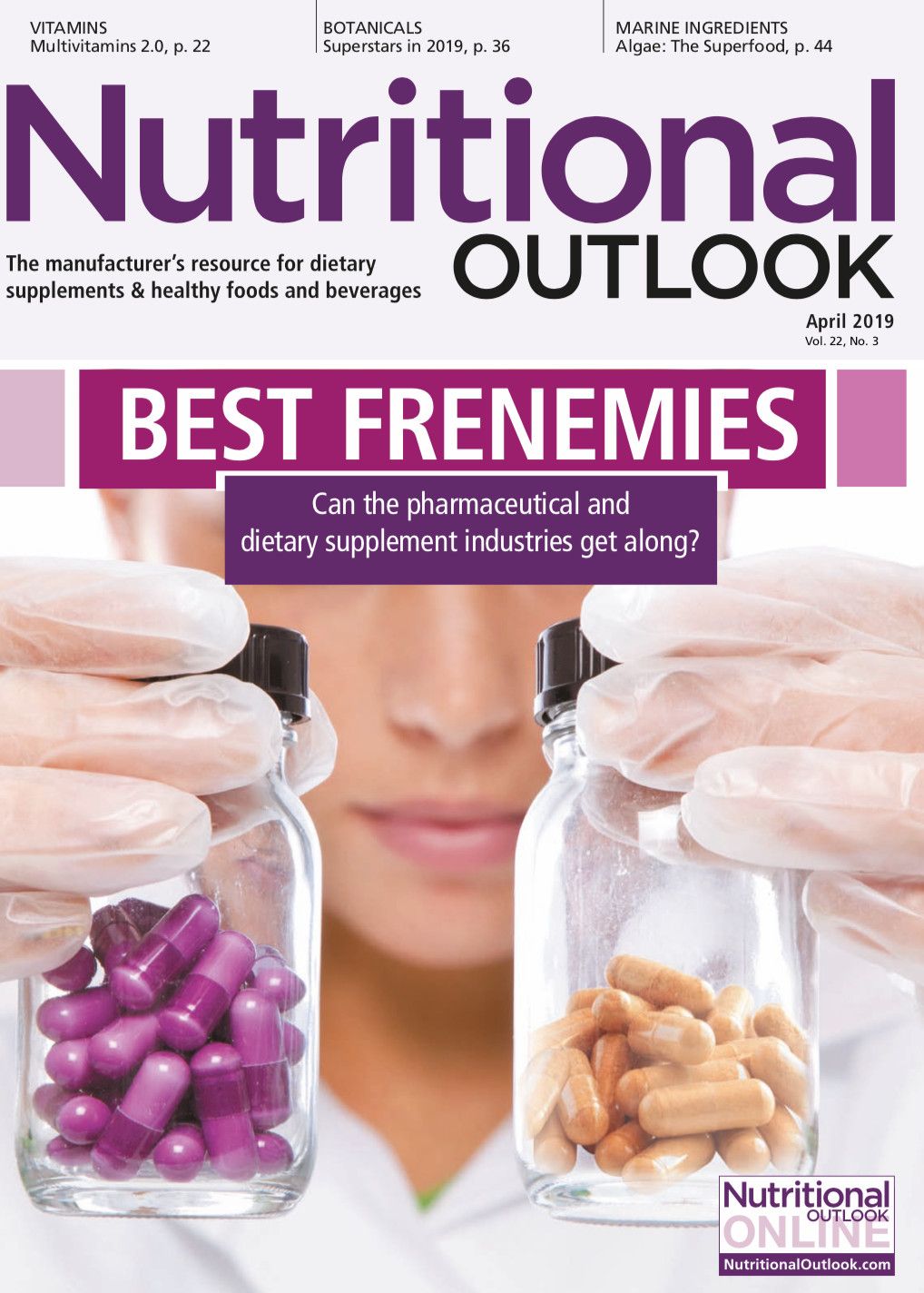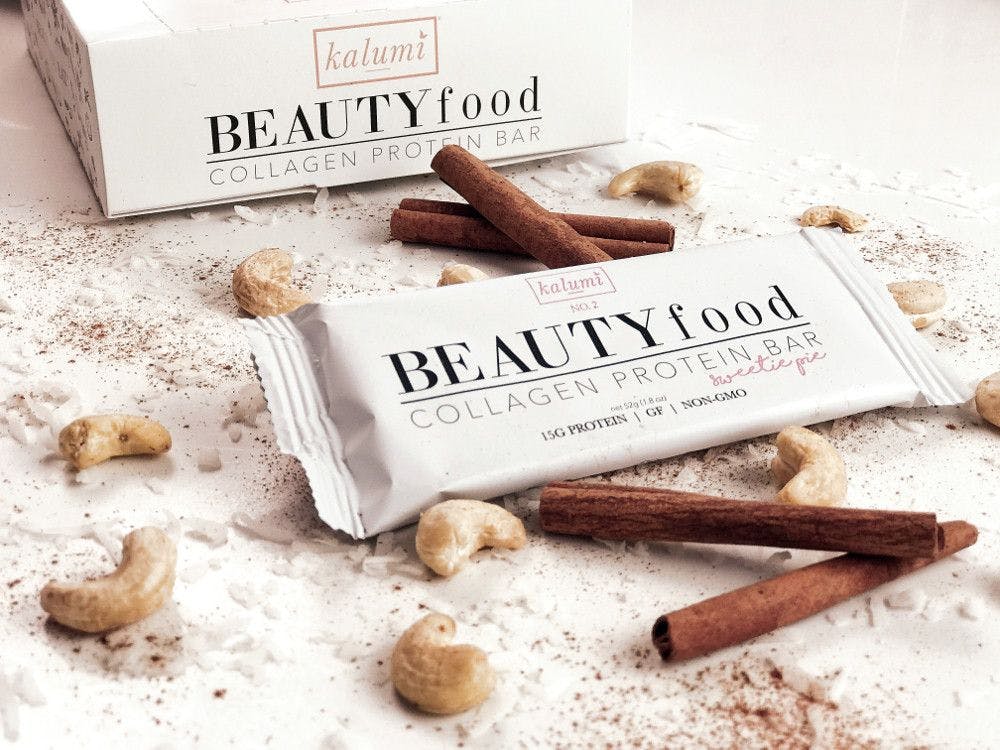Multivitamins 2.0: Not your grandparents’ supplements
The biggest shift in multivitamin thinking involves meeting consumers where they are-in their lifestyles and their life stages.
5Second/Stock.Adobe.com

Cast your gaze across a contemporary supplement shelf crowded with ever-more fine-tuned formulations and you could be forgiven for asking: Do they even make plain-old multivitamins anymore?
They certainly do, and for good reason: We need them. According to the latest National Health and Nutrition Examination Survey (NHANES), nearly one-third of American adults may be teetering on the edge of at least one vitamin deficiency. And but for the humble multivitamin-whose users have only a 14% risk of deficiency, compared to the 40% risk found among those who don’t take dietary supplements at all-we might tumble over the precipice entirely.
This is hardly lost on Tamara Bernadot, co-founder and chief nutrition officer, Persona (Snoqualmie, WA), who observes that “based on nutrition intake studies, there’s a real need for a daily multivitamin to help adults meet the recommended intake levels of essential nutrients that the body can’t make on its own.”
But, she continues, “To take nutrition to a new level-and to stay relevant with consumers-there’s also a need for multivitamins to go beyond meeting daily minimums.” Fortunately, today’s multivitamins are doing just that while still providing the reliability, affordability, and ease of use that make them invaluable backstops to our sometimes less-than-optimal diets.
Feeling Needy
If even conscientious consumers fall short of optimal eating, it’s not for lack of trying, says Sara Cullen, founder and CEO, GEM (Venice, CA). “As much as we’d love to get all our nutrition from a colorful, well-rounded daily diet,” she contends, “it’s nearly impossible for three reasons.”
One, she and others claim, contemporary agriculture has yielded successively less-nutritious harvests than in generations past. Then there’s the heavy toll that stressful, sedentary lifestyles take on our bodies-and the corresponding need to rebalance the account nutritionally. And finally, she says, there are those previously mentioned nutrient deficiencies. “So we do need to supplement our diets with the right vitamins built the right way.”
Andrew Shao, PhD, interim senior vice president, scientific and regulatory affairs, Council for Responsible Nutrition (CRN; Washington, DC), also concedes that “Americans’ diets fall short in delivering the recommended amounts of key nutrients.” Key among these “nutrients of public health concern” singled out in the 2015 Dietary Guidelines for Americans1 are calcium, magnesium, choline, and the vitamins A, D, E, and C, with a special nod to the need for iron among women.
All of which underscores the importance of supplementation. “Studies2 analyzing NHANES data reveal that supplement use-specifically multivitamin use-reduces significantly the percentage of the U.S. population failing to achieve recommended intakes for these key nutrients,” Shao notes. Better yet, the benefits of multivitamin use accrue to those who need them most: “The prevalence of nutrient inadequacy among Americans in low- to middle-income brackets tends to be higher; thus, daily multivitamin use can have a greater impact on these groups.”
Growing Big and Strong
So it’s heartening to learn that the 2018 CRN Consumer Survey on Dietary Supplements once again affirmed the multivitamin as the most popular dietary supplement in overall use across generations and genders-a spot it’s held for two decades.
Notable, Shao adds, is the 83% share of supplement users in the 18-to-34 age bracket who take a multivitamin-an 8% jump over the previous year. “This increased popularity among younger adults points to an interest in simple supplementation and further emphasizes that consumers continue to take supplements to support their overall health and wellness,” he says.
But don’t just take CRN’s word for it. Lonza Consumer Health & Nutrition (Morristown, NJ) commissioned a study3 from the Natural Marketing Institute (NMI) that also found multivitamins “to be the type of supplement most consumers use to help ensure they’re getting the nutrients they require,” says Juliana Erickson, senior marketing manager, Lonza Consumer Health & Nutrition.
The NMI data reveal steadily high use over the past 13 years, Erickson continues, with the rate of use rising from 67% in 2005 to 75% in 2018. As far as she’s concerned, that “indicates that there’s still a market for manufacturers of multivitamins.”
Adding to their appeal, multivitamins eliminate the “pill burden” that can be taxing for all users, and especially, Erickson says, for “those supporting multiple health conditions. By combining key nutrients into one dosage form, multivitamins help consumers increase their vitamin intake while also reducing the pill burden.”
Moreover, Shao adds, multivitamins are, quite simply, safe, stable, and consistently high-quality products. “Consumers have always turned to multivitamins as a nutritional insurance policy,” he says. “They bring peace of mind to consumers, who know their diets are seldom what they should be.”
Remaining Relevant
So what’s not to like? Well, nothing, really. But there’s so much more that consumers could like about multivitamins, if only manufacturers were to work such assets into the formulas.
Many are, because they know that if they don’t, they risk being left behind. As Erickson says, “It’s vital that multivitamin manufacturers continue to drive innovation to differentiate themselves in a mature, low-growth market.”
Shao agrees, noting that while multivitamins “have remained stable for the past several decades, there have been interesting advances.” Some brands, he says, are experimenting with what he calls “novel ingredients, such as botanicals or other ‘nonessential’ nutrients.” Others, he says, have honed nutrient-delivery formats to improve bioavailability, or delay or promote rapid absorption.
On that front, Erickson says, “Modified or timed-release profiles continue to gain prominence in multivitamin and combination products to help ensure that active ingredients reach their intended target location in the body while also masking odors and taste for a better consumer experience.”
She says that beadlet technology helps manufacturers achieve these goals, enabling a multivitamin to deliver its payload throughout the day. The technology also has the advantage of letting manufacturers combine otherwise incompatible ingredients into a liquid capsule better to optimize the actives’ effects. “Tablet-in-capsule and lipid multiparticulate, or LMP, technologies further broaden the delivery options,” she continues, “and, thus, the combinations available to manufacturers.”
As for increasing the nutrient pool, Cullen’s company, GEM, makes its vitamins from minimally processed, plant-based, whole-food ingredients, which she believes “your body absorbs best.” And unlike traditional multivitamins, her company’s formulas include ingredients like the adaptogenic herb ashwagandha, the red algae–derived antioxidant astaxanthin, and chlorella, “a green algae known for its heavy-metal detoxing benefits,” she says. “There’s a lot more to food than individual minerals and vitamins. Other micronutrients that aren’t quantified on a nutritional label-things like antioxidants-are just as important for your body. This is another big shift in thinking that we need.”
Formulation Fit
But perhaps the biggest shift in multivitamin thinking involves meeting consumers where they are-in their lifestyles and their life stages.
“In some ways, the reasons multivitamins need to evolve reflect the needs of the supplement category in general,” Shao posits. “The tradition of ‘one size fits all’ in multivitamins could be its greatest limitation. New scientific advances show that individuals have unique health statuses and nutritional needs. Unlike pharmacology, nutrition science tells us that the body’s response to supplemental nutrients is directly determined by its baseline nutrition status, and everyone’s different.”
Indeed, says Cullen, “The recommended dietary allowances-RDAs-haven’t changed much since they were created in the 1940s and are based on trying to find a one-size-fits-all solution for 99% of the population. Secondly, our modern lifestyles have contributed to all kinds of new stressors for minds plus bodies than ever before. So it’s time we change what our daily essentials should be and how much we need to supplement with.”
In response, brands are fitting formulas to distinct demographics. “Multivitamins have been developed aiming at different age groups-kids, teens, adults, older adults-different genders, the physically active, and so-on,” Shao notes. “And with advances in science, companies can get even more specific in providing personalized products and formulas according to one’s individual health profile. So the trend of personalized multivitamins will continue, all the way to each consumer receiving his or her unique formulation.”
Erickson adds that not only are multivitamin formulations focusing on specific consumer groups; they’re helping consumers achieve specific health goals, as well. “Consumers increasingly seek solutions to support their busy lifestyles and the pressures of modern life,” she says, “making formulations for mood health and stress, cognitive health, eye health, sleep support and energy popular.”
On the Levels
But none of this matters if the formulations don’t deliver the right nutrients in the right amounts-and here, Bernadot contends that legacy multivitamins have room for improvement.
“Based on our review of the current multivitamin market, traditional multis-and even some that are part of personalized- or subscription-based models-really only deliver the minimum levels of nutrients,” she says. “But there’s a need for multivitamins to go beyond meeting daily minimums to achieving therapeutic nutrient levels.”
When her company, Persona, launched its Foundational Multi, it made sure that its medical advisory board, as well as decades of peer-reviewed science on nutrient efficacy, supported the finished formulation’s ability to deliver those safe and effective “therapeutic levels” of essential nutrients.
For its part, CRN recommends2 that formulas contain at least 50% or more of the dietary value (DV)-while not exceeding the tolerable upper intake limit (UL)-for any nutrient. “There are technical limitations that can make it challenging to achieve this for every essential nutrient,” Shao concedes, with “bulky” minerals like calcium and magnesium typically included at lower levels. But he’s found that most manufacturers offer products with a wide range of vitamins and minerals at levels 30% to 100% of the DV.
Staying on Trend
How else can multivitamin makers “speak” to their increasingly diverse, increasingly demanding market?
They can maintain as clean a label as possible, for one. Lonza’s Erickson points out that 59% of respondents to her company’s NMI survey would prefer buying supplements from natural sources. “With this knowledge, and with the rise in interest in plant-based diets, now comes demand for cleaner labels and more transparency about what’s in supplement products,” she says.
Alas, claims Cullen, most multivitamins mirror “processed foods,” with ingredients from “questionable sources, toxic fillers, binders, synthetic colorants, and megadoses of nutrients that do more harm to the body than good.”
Bernadot advises brands to take consumers’ pharmaceutical regimens into account. “In 2017,” she says, “we conducted a study with Wakefield Research that uncovered that nearly 40% of Americans taking prescription medications and dietary supplements didn’t know about drug-nutrient interactions, or DNIs. This is alarming, as many consumers take their nutrition into their own hands-grabbing supplements they need from store shelves where nutritionists aren’t readily available to check possible DNIs.” So when her company prepares personalized nutrition models for its consumers, it cross-references more than 850 prescription medications to avoid risky drug-nutrient interactions.
Making multivitamins pleasant to take can also go a long way toward boosting compliance. Though Lonza’s NMI data show that tablets and capsules remain the preferred format for 41% and 42% of consumers, respectively, Erickson says “the desire for alternative formats is steadily increasing, helping to promote supplement growth across an array of new categories, from beverage shots to bars, and driving the proliferation of gummy-type products.”
If innovations like these keep multivitamins relevant in changing times, “we’re likely to see nutrient gaps shrink over time,” Shao says. “And the very basis for the well-justified use of multivitamins today could very well be reduced tomorrow.” At that point, he says, “the key will be to evolve the value from filling nutrient gaps to promoting health, which most certainly will be an urgent need well into the future.”
References:
- https://health.gov/dietaryguidelines/2015/guidelines
- https://www.crnusa.org/multivitamin-mineral-mvm-inclusion-supplemental-nutrition-assistance-program-snap
- NMI SORD Proprietary Report for Lonza Consumer Health & Nutrition – US – 2,004 participants, online, 2018.

Prinova acquires Aplinova to further increase its footprint in Latin America
April 7th 2025Prinova has recently announced the acquisition of Brazilian ingredients distributor Aplinova, which is a provider of specialty ingredients for a range of market segments that include food, beverage, supplements, and personal care.






















